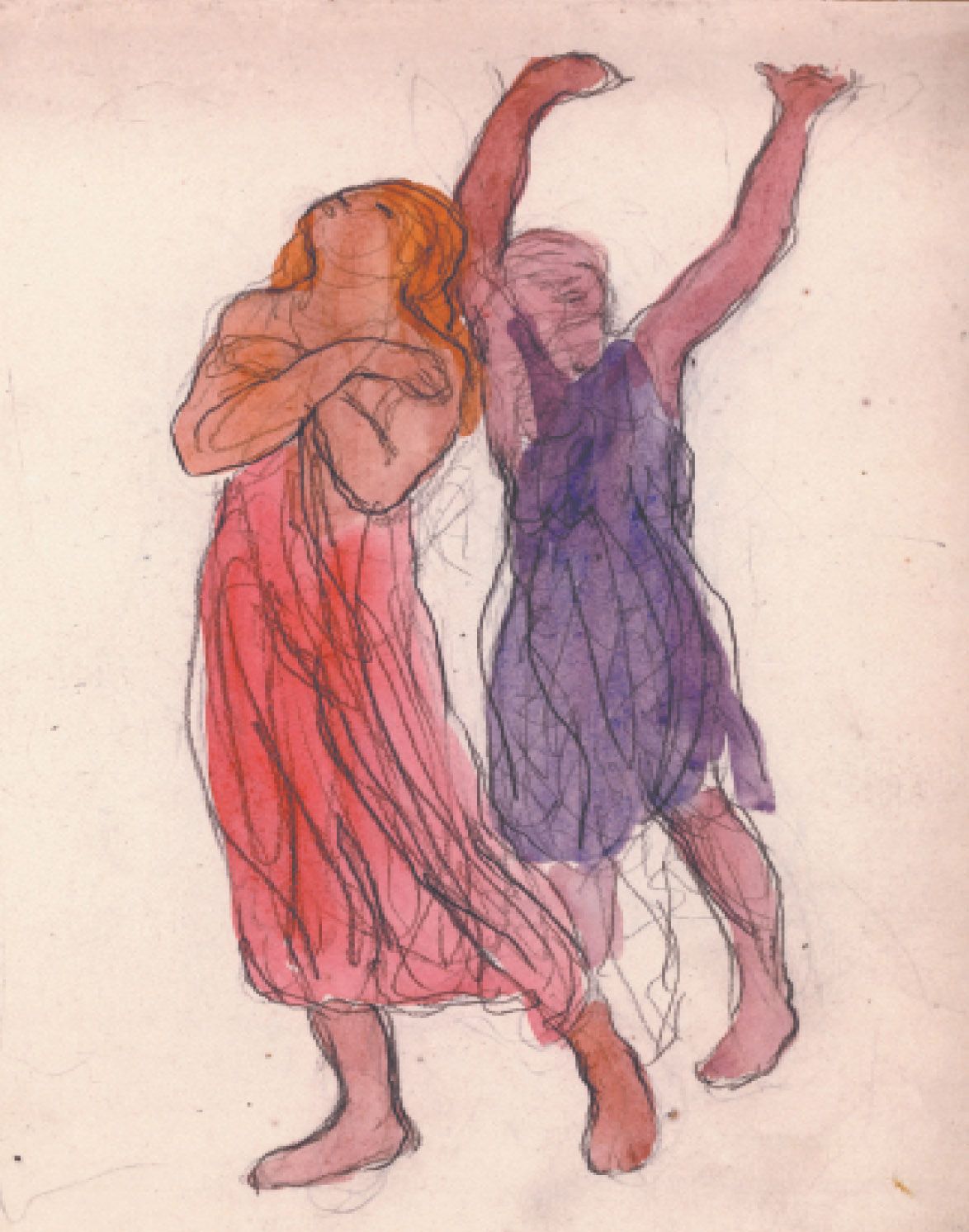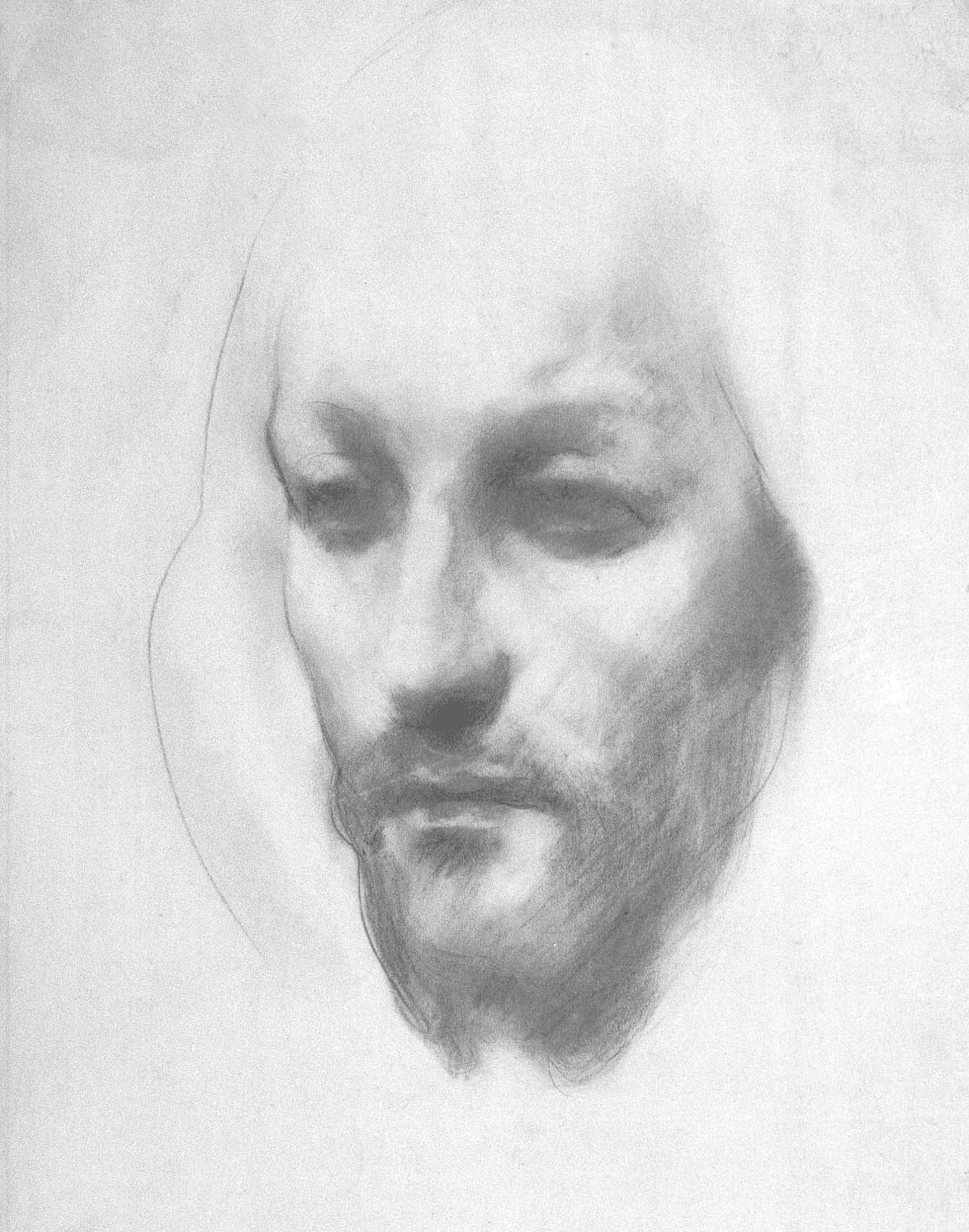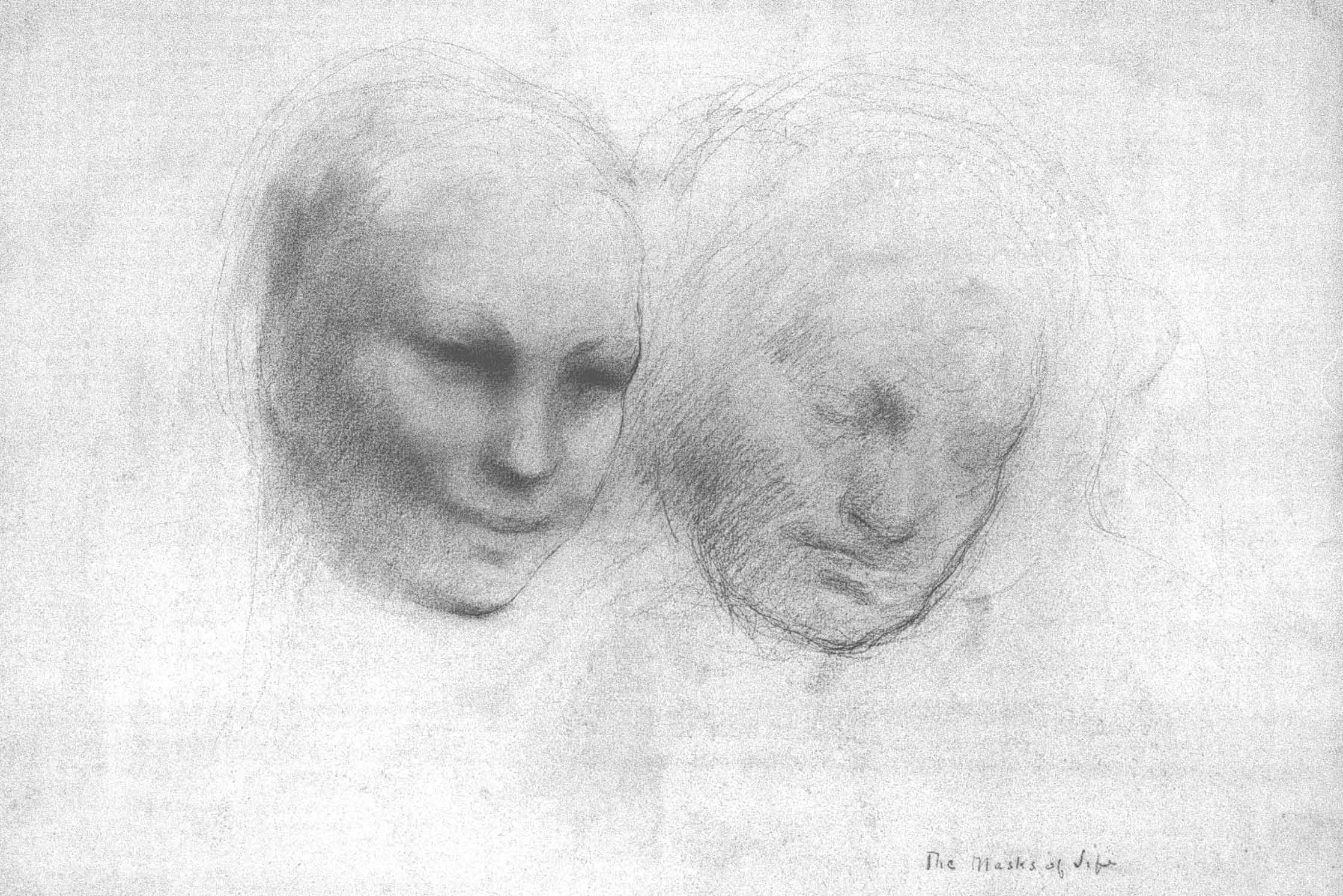A Sketch Comes to Life
‘The Teaching Tree,’ by Muhannad Shono. 2022. Sculptural installation, with palm fronds, pigment, pneumatics & metal structure, overall dimensions variable. Photograph by Samuele Cherubini. Courtesy of the artist and The Visual Arts Commission, Saudi Arabia.
“My work embodies the irrepressible spirit of creative expression: the power of the imagination that grows despite what may attempt to limit it but instead makes it more resilient. This is a resilience that is taught by nature, in its continuous cycles of death and re-growth, like trees nourished by the ashes of wildfires…”
— Muhannad Shono
The moment the doors opened at the Venice Biennale and revealed the dyed black palm leaves of ‘The Teaching Tree’ by Muhannad Shono, I knew that this wasn’t just a piece of art , but a behemoth brought to life by a community of creatives who worked hard and tirelessly. The smiles and excitement emanating from every person who had a small or big role in producing this work was contagious and palpable. As Shono has been quoted in the announcement: “I am honored to represent Saudi Arabia at La Biennale di Venezia, not only as myself but carrying with me the irrepressible creative spirit of Saudi Arabia and to be working with the entire team of the National Pavilion.”
The irrepressible spirit is represented by the presence and support of different key players including the Minister of Culture His Highness Prince Bader bin Farhan Al Saud, the Ministry of Culture, the Visual Arts Commission, Saudi Pavilion, Athr Gallery, Jax District, La Biennale di Venezia, Factum Arte, the Craft group, Athr Gallery, We Exhibit, The Aimes, and so many more. Moreover, the work was a production of the spirit of the curators, Reem Fadda and Rotana Shaker, and the artists and creatives: Tamara Kalo, Artur Weber, Nasser Almulhim, Obadah Aljefri, Ayman Zedani, and Sarah Brahim. There are many more people behind the scenes that helped and contributed to making the vision of the artist a reality. It is this spirit and excitement that can be felt at the inauguration and throughout the opening weekend.
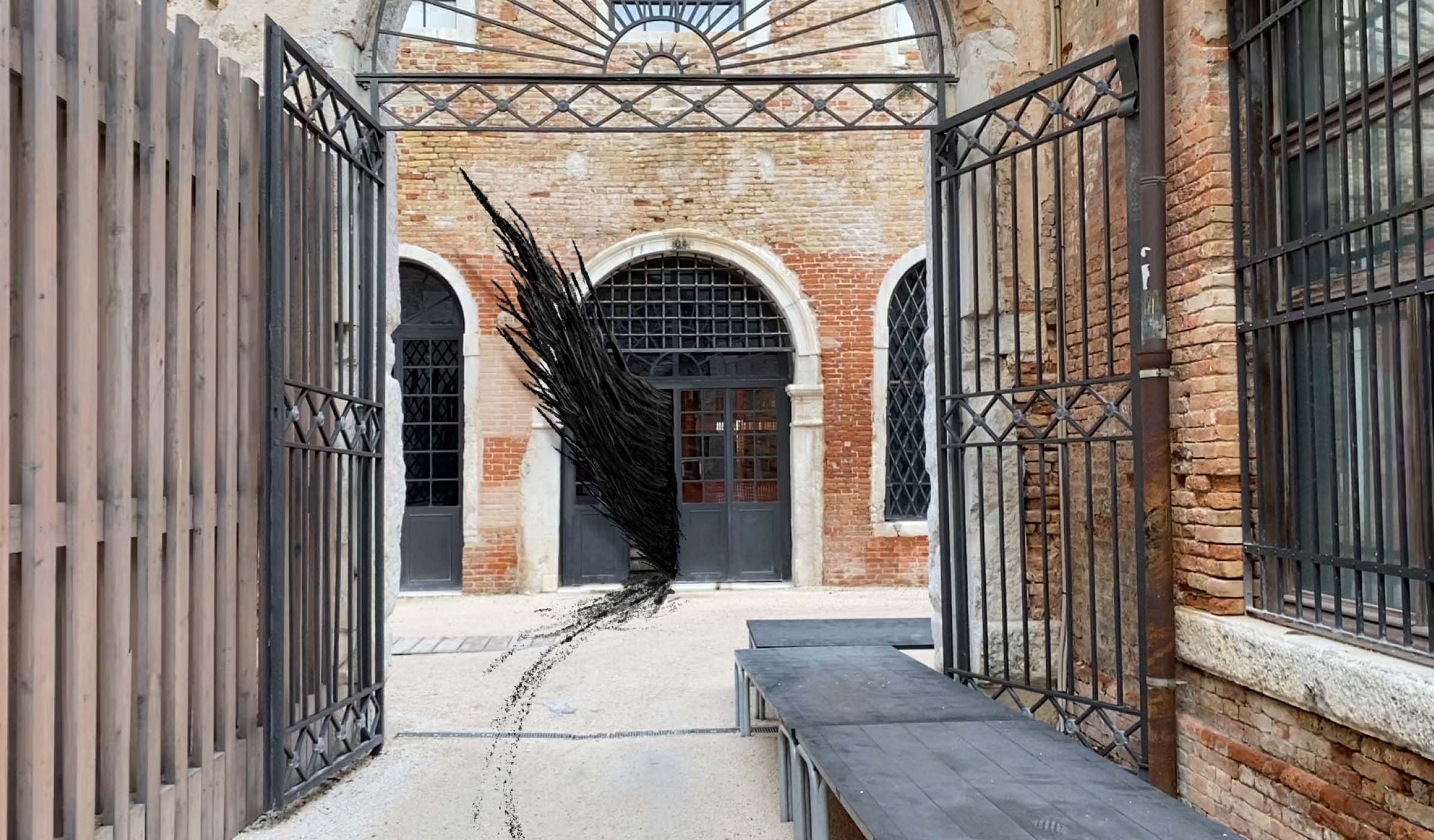
Digital Concept Sketches of the imagined ‘Teaching Tree’ piece by Muhannad Shono. Courtesy of the artist.
It is no surprise that Muhannad Shono had a great community of people. He expressed during the inauguration, “Work like this starts off by myself, my sketchbook, blank page, black ink, and then I started to enjoy speaking to friends, harassing them over and over again over coffee. The bigger [and] the more challenging these projects become you realize you need to bring in this community of people. It sounds cliche but it is very very very true. Growing up, I experienced a lot of people leaving Saudi, a lot of creative people, who wanted to go abroad and express themselves.
It is no surprise that Muhannad Shono had a great community of people. He expressed during the inauguration, “Work like this starts off by myself, my sketchbook, blank page, black ink, and then I started to enjoy speaking to friends, harassing them over and over again over coffee. The bigger [and] the more challenging these projects become you realize you need to bring in this community of people. It sounds cliche but it is very very very true. Growing up, I experienced a lot of people leaving Saudi, a lot of creative people, who wanted to go abroad and express themselves.
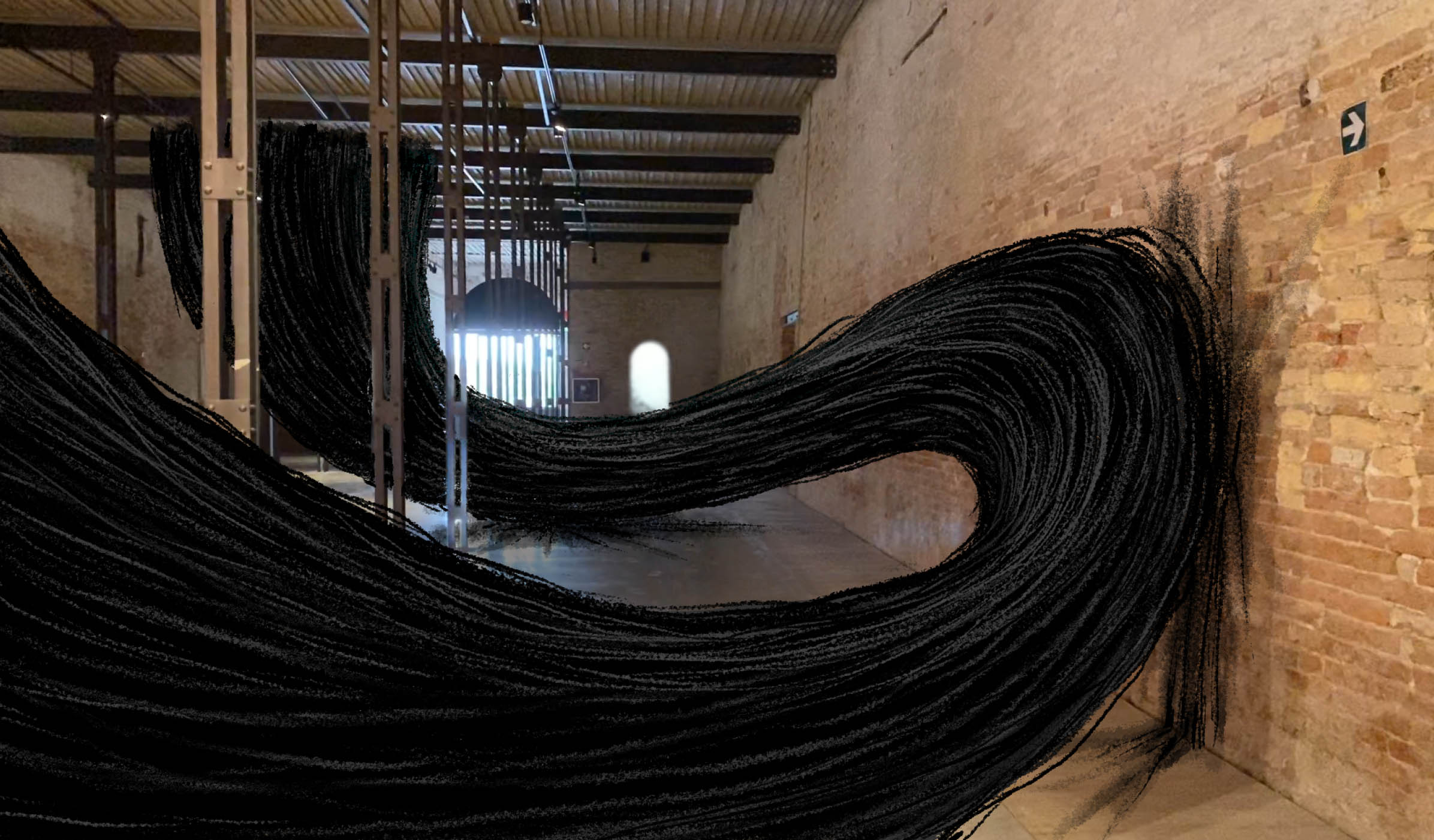
Digital Concept Sketches of the imagined ‘Teaching Tree’ piece by Muhannad Shono. Courtesy of the artist.
However, the experience is nothing without the gentle monster waiting in the actual pavilion. Traversing through the space to reach the other end and see the beginning of the artwork, this act of passing by to see the whole piece is breathtaking and awe-inspiring. The work starts with a fine line: The line of creation. Then it grows as the concepts, ideas, and creative energy are pumped into it until it has a life of its own. It starts breathing and experiencing life beyond the confines of the pavilion. Shono managed to manifest a creature into our reality as an homage to the act of creation and the power of imagination; one “that grows despite what may attempt to limit it but instead makes it more resilient.
This resilience is taught by nature, in its continuous cycles of death and re-growth, like trees nourished by the ashes of wildfires.” His imagination managed to bring a sketch to life, giving breath and life to a 40-meter-long structure made of palm leaves painted in black and animated by pneumatics. There is a feeling of magical realism or spookiness, as one of the passersby commented. This fits into the concept that the work is an investigation of the drawn line and its potential for creation and destruction. That first line on a paper in whatever practice, be it art or writing or music, is the most important as it generates multiple thoughts, ideas, and creative outputs. The line is the first act of agency. The whole concept falls within Shono’s exploration of the self, tradition, mythology, and the natural world.
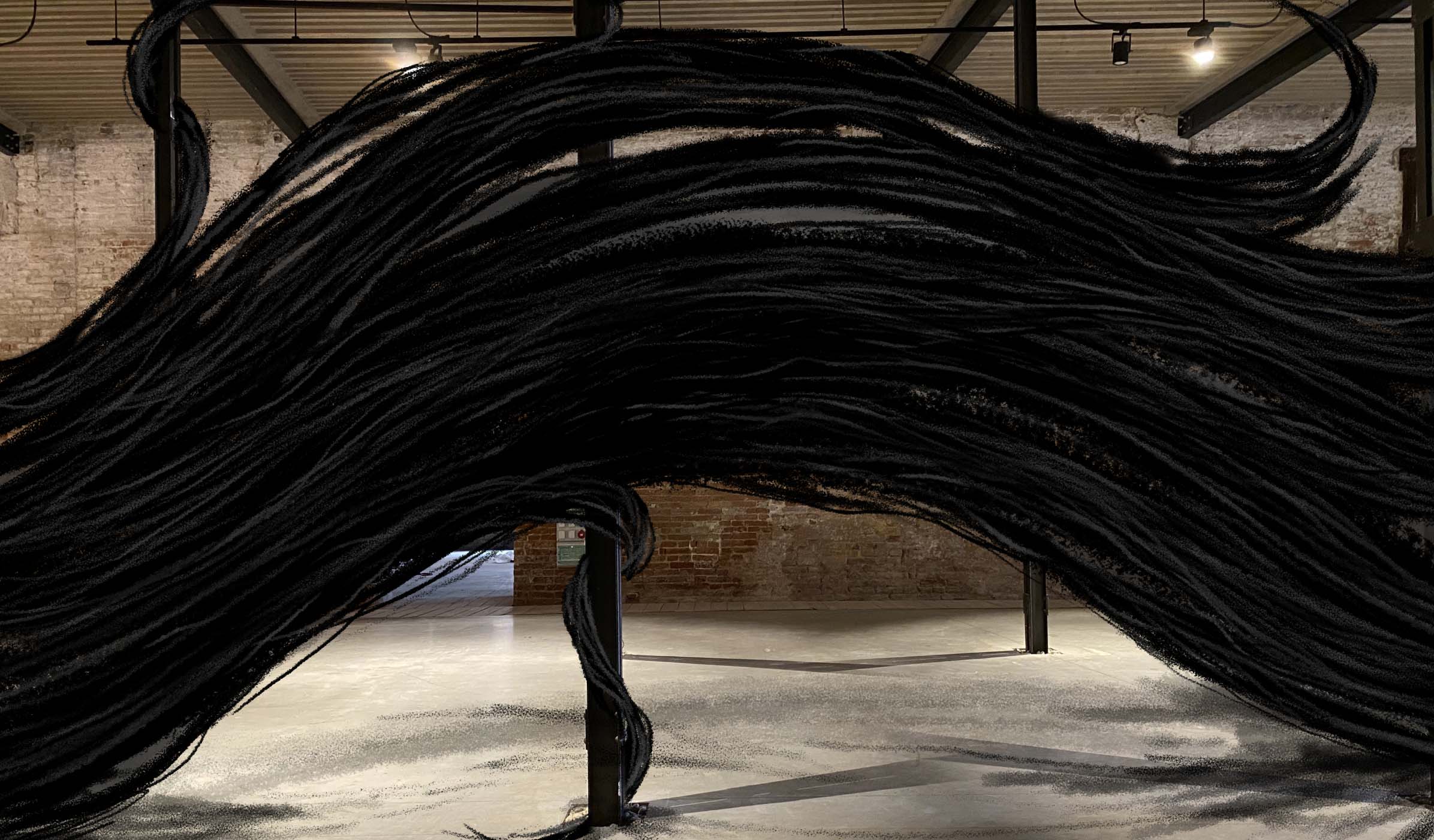
Digital Concept Sketches of the imagined ‘Teaching Tree’ piece by Muhannad Shono. Courtesy of the artist.
Furthermore, the lushness of the leaves and the expansion from a singular stream into a behemoth is another area of exploration for Shono: the story of Al-Khidr. This legend can produce a garden wherever he sat. This act symbolizes rebirth, regeneration, and healing. The Teaching Tree is a clear reflection of that momentous growth representing Al-Khidr’s effect. However, the work does not only reflect existing mythology but creates new ones to better express contemporary concerns and ideas. The tail end of the work floats the larger ends of the palm leaves, enticing the feeling of potential growth and the need to escape the confines of the pavilion.
The material itself is interesting: “The palm material is a tricky material for the national pavilion of Saudi Arabia because it is an expected material but the challenge of taking a traditional material that we all expect, deconstructing it and reimagining it into something literally being born from the imagination speaks of not only the confidence of the team and our process, but also our ability to break free from the stereotype of who we are and the editorial headlines of what others expect us to be.” The use of the material non traditionally expands Shono’s way of reimagining the world, but also connects further with Al-Khidr and the region we stem from.
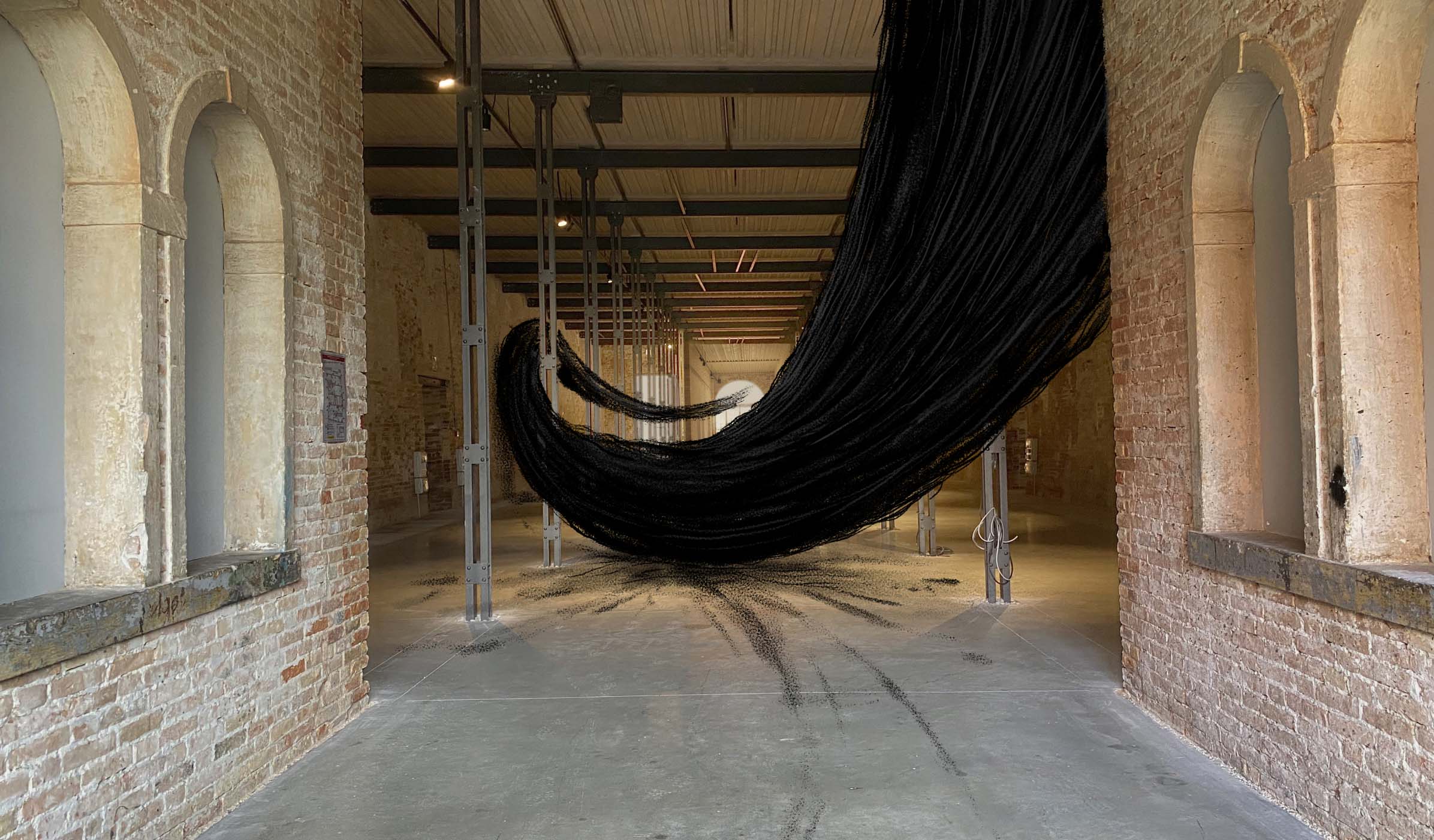
Digital Concept Sketches of the imagined ‘Teaching Tree’ piece by Muhannad Shono. Courtesy of the artist.
Furthering the mythology, the structure isn’t only a reflection of unmitigated growth and expansion of plant matter, but a literal living being that breathes and is not limited to whatever confines it. It is also a moment that recognizes that “the act of restriction, the attempt to restrict human creative imagination, is futile because when it attempts to burn down the forests of imagination, this only creates fertile ground for more resilient forms of expression to grow.” Reinforcing the ideas from Al-Khidr’s myth, Shono used the restrictions to be the fertile ground for his imagination and does not allow his work to be restricted by the space or the reality it is in. Understanding the concept and how it is presented in the artwork reveals to the viewer a depth of research and imagination ready to burst at the seams. It also shows the power of human imagination and the capacity to develop beyond the limitations of what is expected or unexpected.
This work is a symbol of how one can develop their own narrative and existence beyond the redactive line and orientalist narrative around the arts and cultural scene in the region. The conversations around art haven’t always been easy and the narratives being told weren’t always what represented the region fairly. For Shono creating this work isn’t only about telling a story that was authentic to him, but he was asked to create something from “the thing, the thing that exists in all your work, this thing that you are obsessed about, and I think the line is that thing and I am glad that we were able to bring this to life in this pavilion.” Fadda enforces that message by saying “The Teaching Tree references the drawn line overgrown, now encapsulating a multitude of dimensions. This object becomes emblematic and dichotomous in imaginations represented, words written, and marks engraved, reflecting upon their irreversible effects on history.”
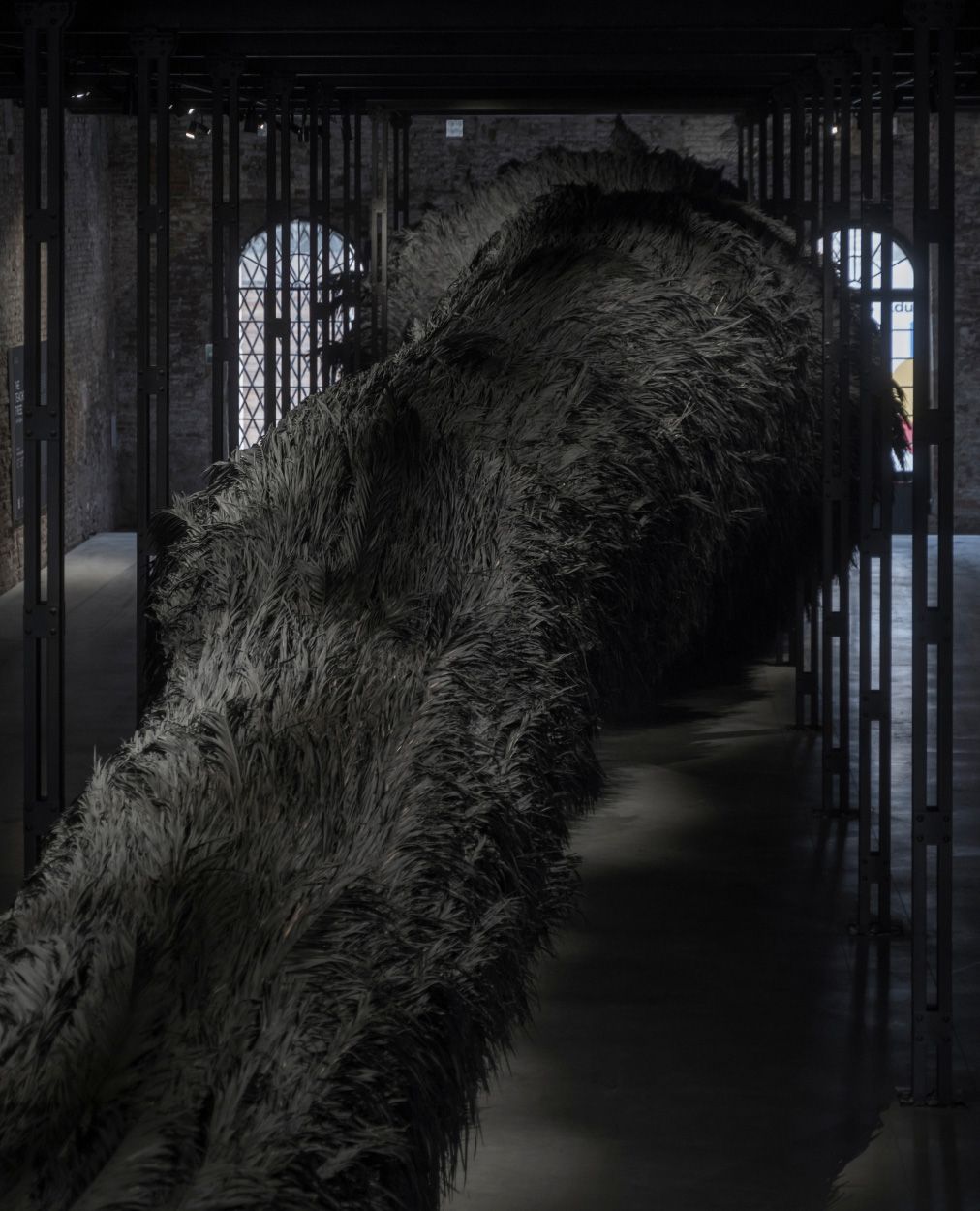
‘The Teaching Tree' by Muhannad Shono can be visited in Arsenale, part of the 59th International Art Exhibition of La Biennale di Venezia, titled The Milk of Dreams, from the 23rd of April to the 27th of November 2022.
Details about the art piece: Sculptural installation, with palm fronds, pigment, pneumatics and metal structure, overall dimensions variable. 2022. Photograph by Samuele Cherubini. Courtesy of the Artist and The Visual Arts Commission, Saudi Arabia.
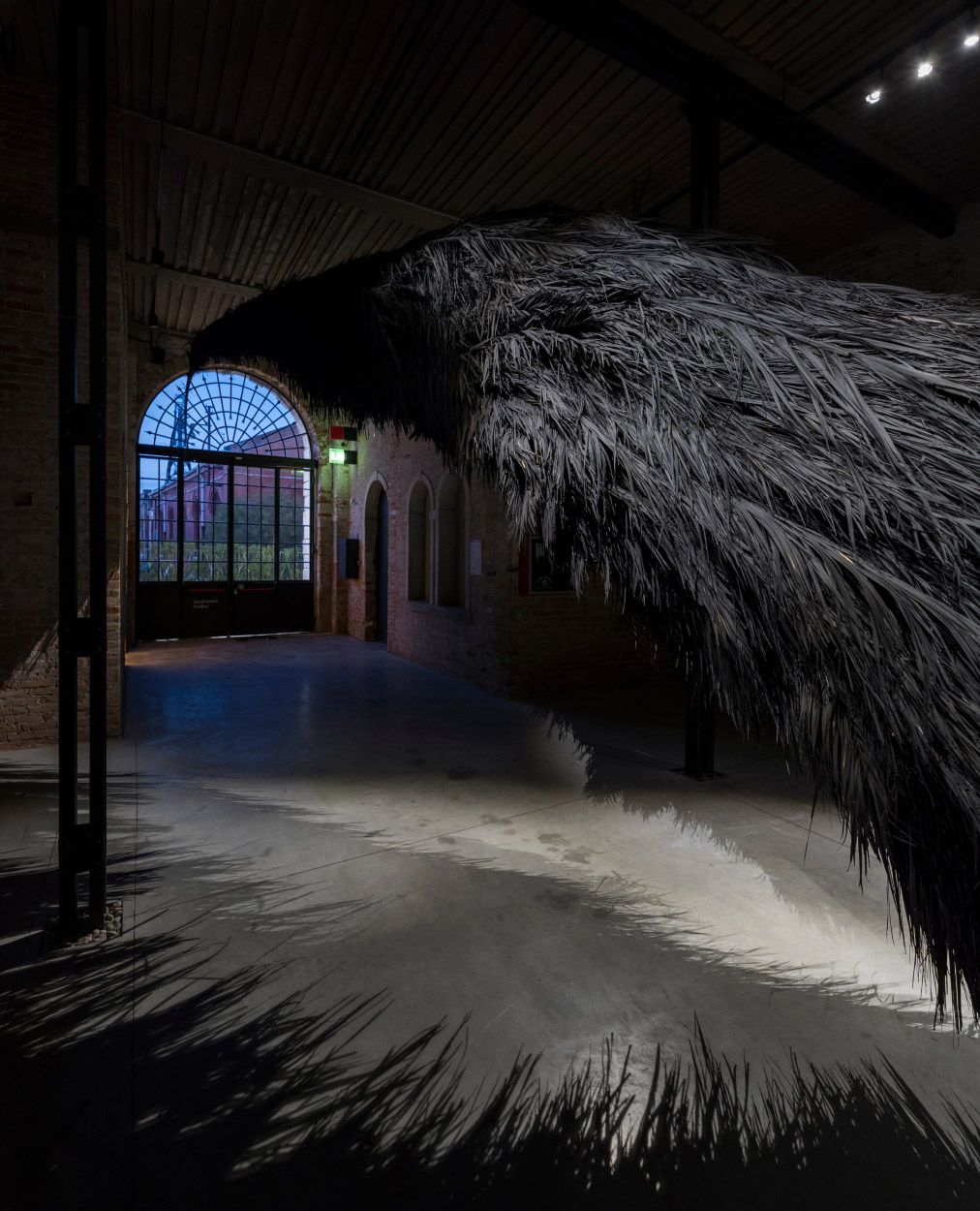
‘The Teaching Tree' by Muhannad Shono can be visited in Arsenale, part of the 59th International Art Exhibition of La Biennale di Venezia, titled The Milk of Dreams, from the 23rd of April to the 27th of November 2022.
Details about the art piece: Sculptural installation, with palm fronds, pigment, pneumatics and metal structure, overall dimensions variable. 2022. Photograph by Samuele Cherubini. Courtesy of the Artist and The Visual Arts Commission, Saudi Arabia.
The obsession with the line is obvious when revising Shono’s body of work from the beginning with his comics all the way to this pavilion. It is especially obvious when you look at his sketches and the development of his initial thought process in his produced work. The line appears physically in the first line drawn, the repeated patterns in his sketches, and the ink on paper artworks. It also appears figuratively in the line between reality and imagination, between life and death, between mythology and facts. He sometimes blurs it and sometimes reinforces it creating moments that feel magical in our reality. While the line exists on so many levels in his work, it is the color black that holds a visual consistency in the artwork.
It stems from his relationship with the black ink because it has a willingness to “omit and redact the visual and the text. For me, it highlighted the importance of what was being obscured.” Using black ink is a form of reclamation of the color from being a “void of nothing” to an instrument that provides “limitless readings” and according to the artist: “when something is hidden, it accelerates the imagination because now you have to imagine what was obscured, what was lost.” The black ink is a major source of inspiration for Shono because it has become a part of his process of questioning what exists between what can be sensed and what can come into existence.

‘The Teaching Tree' by Muhannad Shono can be visited in Arsenale, part of the 59th International Art Exhibition of La Biennale di Venezia, titled The Milk of Dreams, from the 23rd of April to the 27th of November 2022.
Details about the art piece: Sculptural installation, with palm fronds, pigment, pneumatics and metal structure, overall dimensions variable. 2022. Photograph by Samuele Cherubini. Courtesy of the Artist and The Visual Arts Commission, Saudi Arabia.
Shono’s work always feels like an experiment of imagination and of the interactions of different materials, technologies, and human skills. Yet they have their own lives and needs. According to Shono, “My understanding of my work continues to reveal itself as I am doing projects. I think for a long time I was doing work obsessively without truly understanding why I was doing what I was doing, but trusting in the process of discovery. And I do not like to do work when I know what the final outcome or output will be, because the process of creativity is suspended, and you are actually executing or delivery.” For example, Shono had an intention behind The Teaching Tree, but “in the end, it wanted to be something, and we had to listen to what it wanted to be and allow it to manifest the way it needed to.”
The freedom to develop the artpiece however it wants, shows how his works aren’t objects or inanimate. They are creatures of agency, and they share their needs and wants with the creative mind that is supporting their manifestations. Hence, calling The Teaching Tree a monster isn’t inaccurate as it is a misunderstood one that protects rather than destroys and we are the monsters for trying to limit and destroy our own imaginations and the creatures that exist within our minds. Shono has mentioned that “you need monsters to defend the creative mind. The imagined world needs monsters to protect it.” So, The Teaching Tree is one of those defenders and we need to respect the role it was given and the feeling it generates in its visitors.
*Hafsa Al-Khudairi, our cultural writer, was reporting from Venice, Italy.
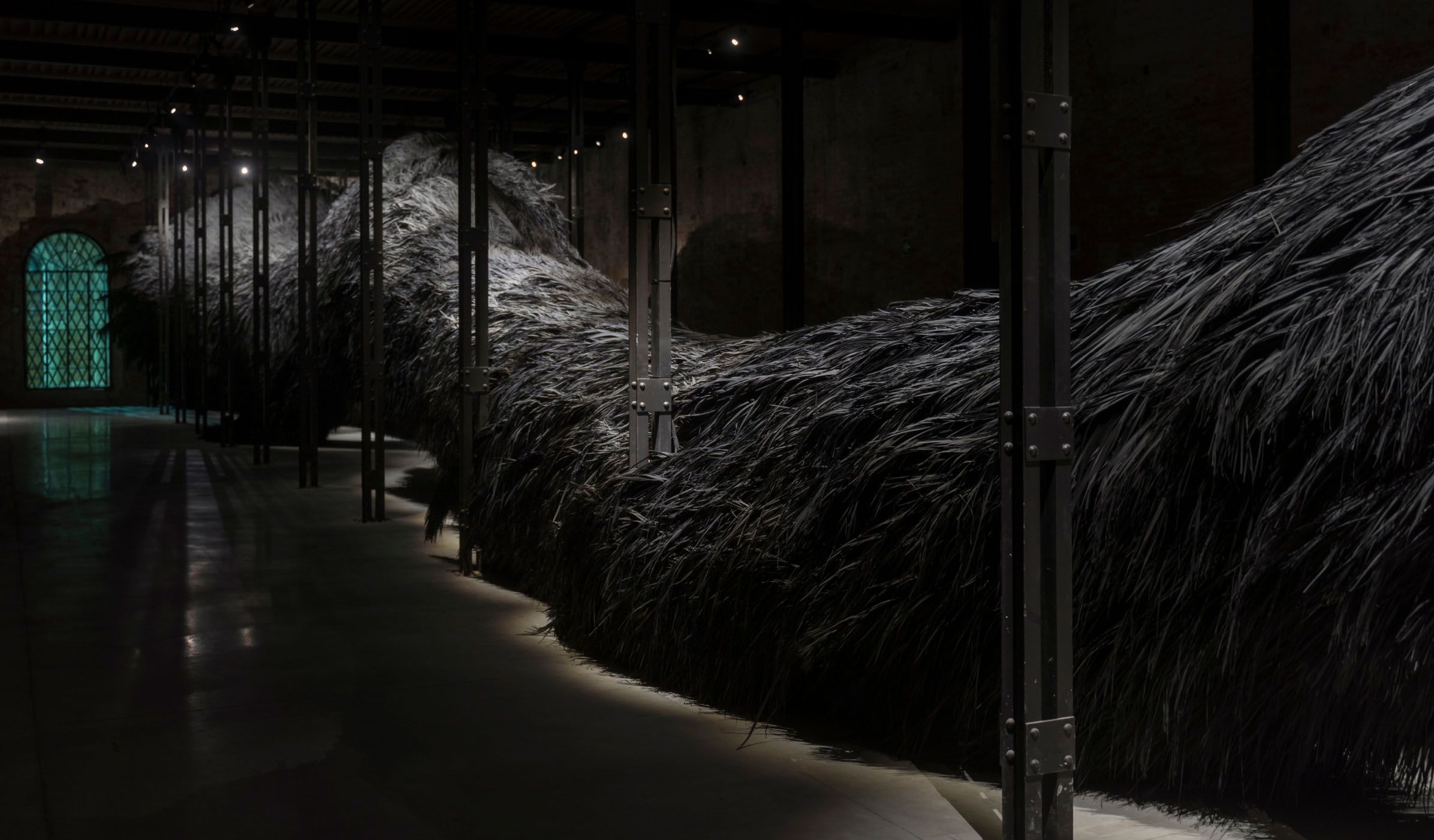
‘The Teaching Tree' by Muhannad Shono can be visited in Arsenale, part of the 59th International Art Exhibition of La Biennale di Venezia, titled The Milk of Dreams, from the 23rd of April to the 27th of November 2022.
Details about the art piece: Sculptural installation, with palm fronds, pigment, pneumatics and metal structure, overall dimensions variable. 2022. Photograph by Samuele Cherubini. Courtesy of the Artist and The Visual Arts Commission, Saudi Arabia.

